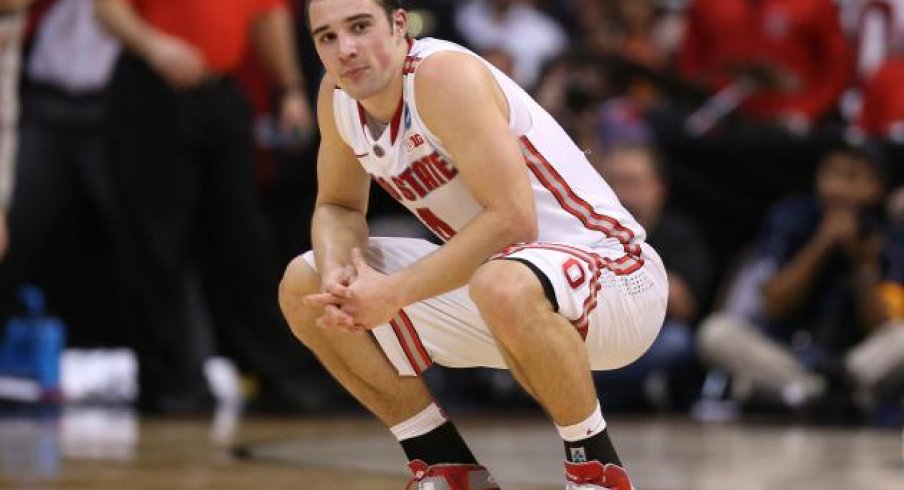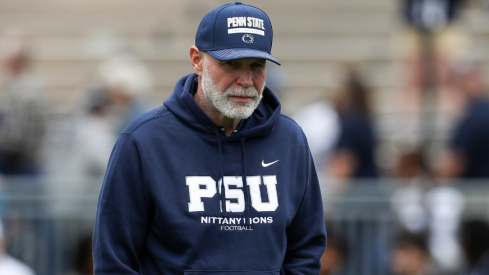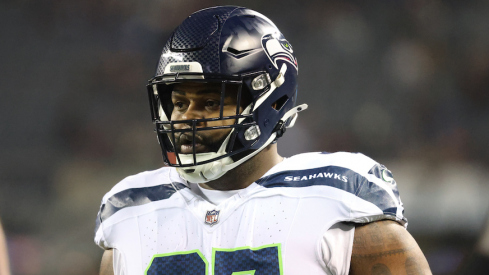When Ohio State goes on the road, anything can happen. That 50/50 proposition doesn’t only pertain to the game’s final result. It extends into the seats.
Last weekend, an ugly incident unfolded in Lubbock, Texas, as Oklahoma State’s Marcus Smart shoved a Texas Tech fan after an insult – still unknown – was hurled in Smart’s direction. It was a reminder of the dangers that exist in the player-fan relationship. Nearly a decade after the infamous “Malice in the Palace,” there remains a false sense of security.
On Saturday night, the 22nd-ranked Buckeyes will take the court at Illinois’ Assembly Hall, where the Orange Crush student section will rain down a slew of taunts to the Big Ten’s Public Enemy No. 1: Craft.
“I just try to avoid them as much as possible,” Craft said of the jeerers. “But I think they get more angry when you don’t say anything to them or acknowledge them. I usually like to rile them up a little more by doing that.”
Ignoring four-letter words, one-finger salutes and insults about family members isn’t included on instructional videos about jump shots. Hostile environments are as old as the republic and as much a part of sports as winning and losing. The rowdier the crowd, the tougher it is for visiting teams to find a groove.
But unlike football, fans can be seen and heard at basketball games. The proximity and intimate setting in arenas creates situations not seen in other sports. It’s rare not to see a player in the stands attempting to track down a loose ball at least once per game. Thus, there’s a greater likelihood of an altercation.
“We don’t want to lose any of the raucous, home-field advantage that we have, because this is a hard place to play,” West Virginia athletic director Oliver Luck said in a statement to fans this week. “At the same time, we’ve got opposing fans who travel to WVU, and we want them to leave Morgantown with a good impression of the University, the city, the state and of our fan base. We also want our fans – from kids to grandparents – to enjoy the game.”
On the same night as Smart’s run-in, another nasty event played out in Tempe, Ariz., where an Arizona State student spit on two Oregon staff members. The hostility that unfolded in both situations reinforced the appearance of a deteriorating level of sportsmanship.
It’s become all too common to see middle-aged adults verbally abusing college athletes and student sections going overboard.
“After the game, [my teammates] will be like, ‘Dude, did you hear what they said?’” Craft said. “They’ll laugh about it. We get a good chuckle about it. Sometimes they’re pretty creative, they yell some things that are pretty funny.”
There are policies in place to prevent fan behavior from crossing the line. The NCAA and universities have run campaigns on sportsmanship in the past. Ohio State’s “Best Fans in the Land” movement saw positive results. Some teams go as far as asking fans to help hold one another accountable and report unruly behavior.
“I just try to avoid them as much as possible. But I think they get more angry when you don’t say anything to them or acknowledge them. I usually like to rile them up a little more by doing that.”– Aaron Craft
When Ohio State moved its student section behind both teams’ benches, the athletic department took a proactive approach. It works in conjunction with the university’s Sportsmanship Council and places four students in the visitor’s section, near the opponent’s parents and traveling party, for each men’s basketball game.
“We have been blessed that our fans are responsive to any initiative our department and the university presents,” Diana Sabau, Ohio State’s senior associate A.D. for external relations and strategic communications, told Eleven Warriors. “Buckeye Nation is proud to cheer on our student-athletes and we appreciate that. Our fans have provided a positive home and away crowd environment for our teams.”
Public address announcements are made at every game in every sport, though rarely, if ever, are they enforced. Fans essentially have total freedom to yell obscenities and use obscene gestures for 40 minutes, while players must idly look the other way. That’s not to say athletes should be going into the stands, but there’s a case to be made that ejections should be more prevalent.
“I hope all universities will take more of a precaution in terms of what’s being said because it can get downright brutal,” Ohio State head coach Thad Matta said.
Smart, an All-American, was suspended three games for shoving Texas Tech fan, Jeff Orr, who, according to video evidence, has been involved in multiple displays of poor judgment in targeting opposing players. He has since apologized.
It highlights the 21st century relationship between players and fans. As the volatility has grown, so has the access. Twitter, Facebook and other forms of social media have given fans an outlet to pile up rude comments. Athletes have also participated in the tawdry world of vulgarity. But missing a field goal and committing to a rival school has become grounds for death threats.
“I’m a social media basher. I hate it,” Michigan State head coach Tom Izzo said. “I don’t think there’s any question everything has changed in the last three years. You never get away from it. You go [to the arena] and you get chewed on, and that’s normal. You can take that. Then you get on the bus and you’re still getting chewed on by their fans or your fans. Telling a kid not to read it is like telling him not to breathe.
“So I think that’s created a whole new problem. I don’t think fans are much different than they were, except maybe they’re so ignorant on Twitter. Now they can do a little more face-to-face. But most people still love hiding behind a keyboard. Maybe they’ve gained a little more courage face-to-face.
“More than the fan, I think it’s the player that becomes more frustrated. They’ve got more pressures on him. I tell my guys, ‘Stay off Twitter if you can’t handle it.’ And I’d say 90 percent of America can’t handle it. We’ve got to learn to deal with it and handle it. It’s probably not going away.”
The expletives aren’t only reserved for players – coaches are also targets. Matta said he’s heard the worst of the worst, joking that his thick skin is due to Hoopeston High School’s Cornjerker nickname.
“With a name Cornjerkers, could you imagine some of the things I’ve heard in my time?” Matta said.
Craft, just 23 years old, has already been subjected to a lifetime of unwanted and unwarranted slights. But even as he’s mocked, despised and reviled in every Big Ten arena he steps foot in, Craft exhibits an unlikely form of compassion and understanding.
It’s that perception of nary a flaw in his character that makes Craft perhaps the most polarizing figure in college basketball. Gritty, undersized guards who specialize in defense often become punching bags for opposing fans. Purdue’s Chris Kramer experienced similar insults during his notable career.
“It's always tough in the heat of the battle,” Craft said. “Emotions run high, especially if things aren’t going well. All it takes sometimes is one thing to kind of make you snap.
“But it's been going on for a while, and I don’t think it goes on unless, as a team, we’re doing something right. They can yell all they want, but the best thing that we can do is find a way to have more points than they do at the end of the game and have the gym be quiet.”
At 10 eastern Saturday night, after two hours of non-stop heckling, Craft’s hope is that he and 11 scarlet-clad teammates strut out of Assembly Hall to the sounds of silence.


